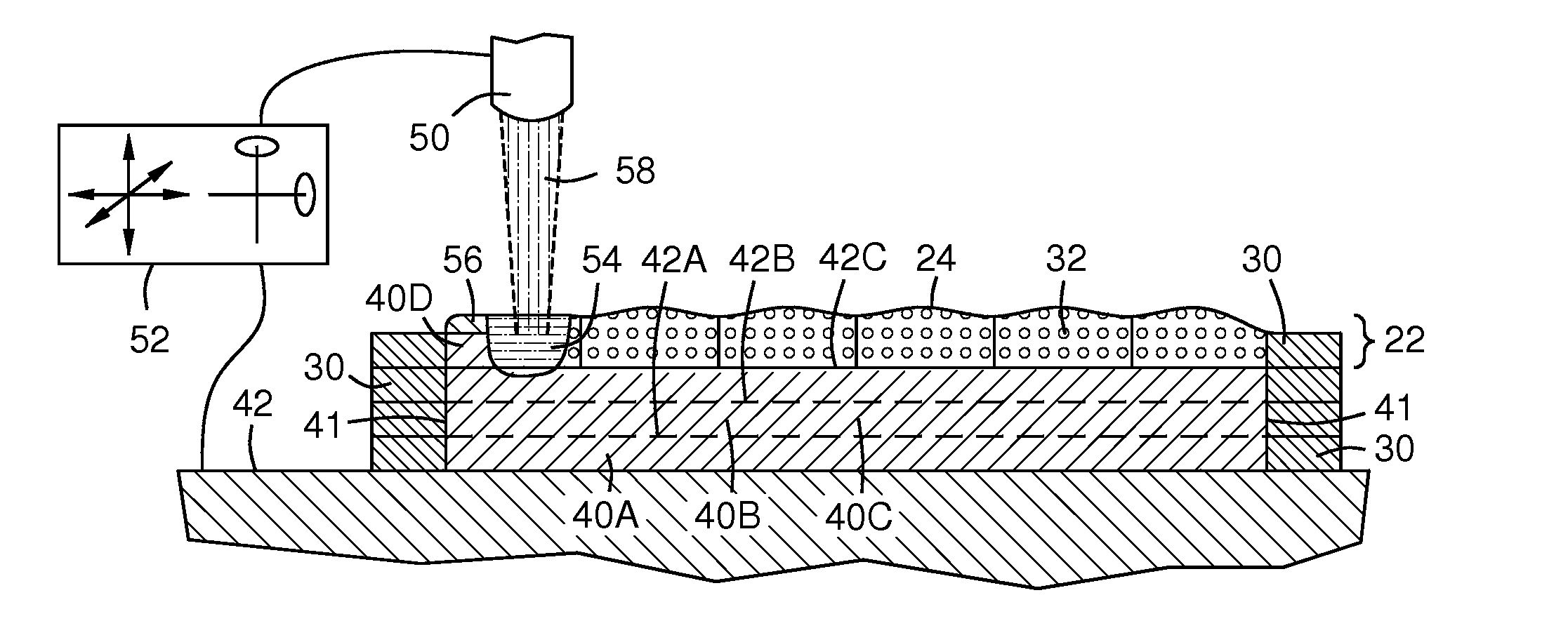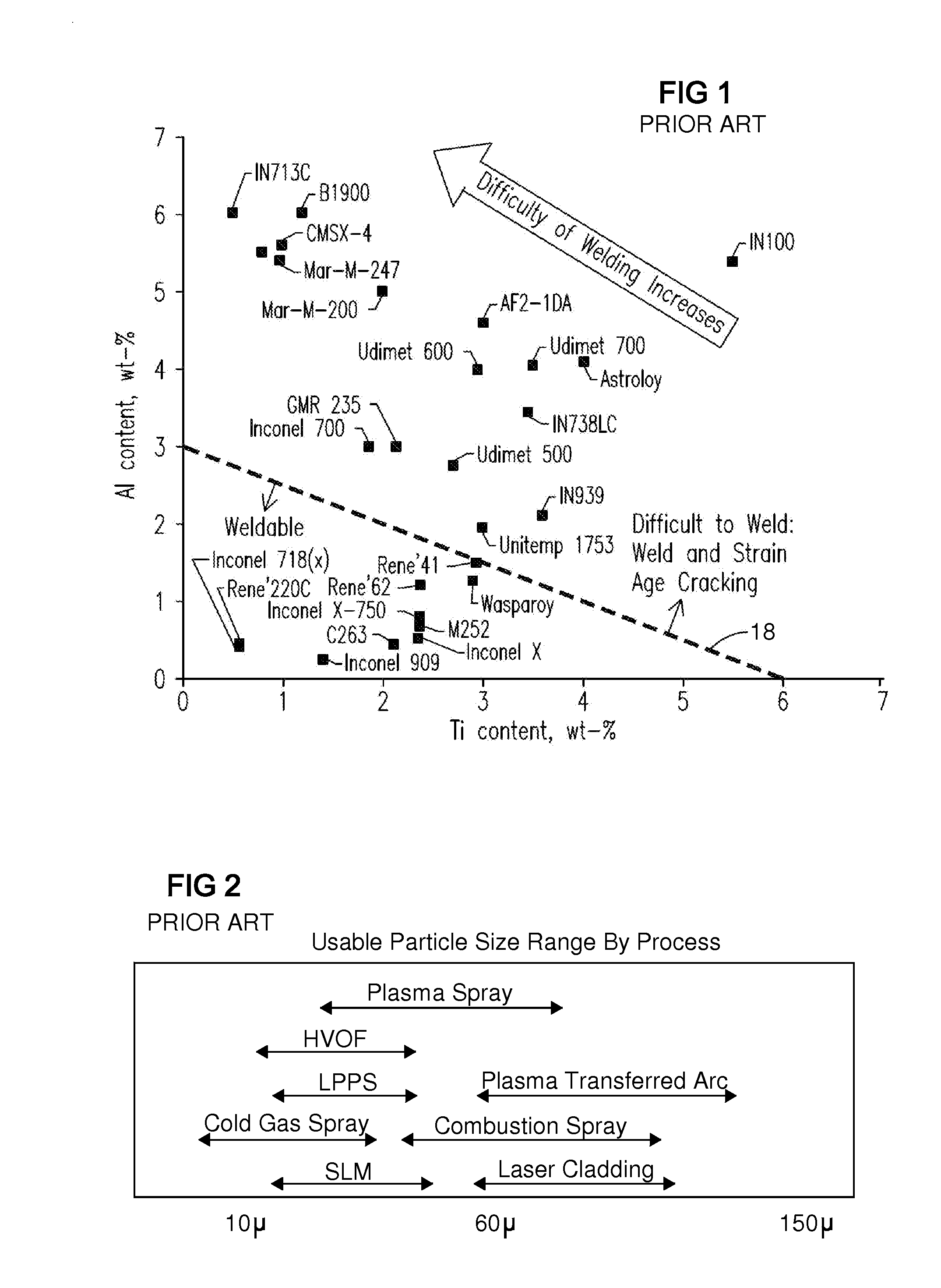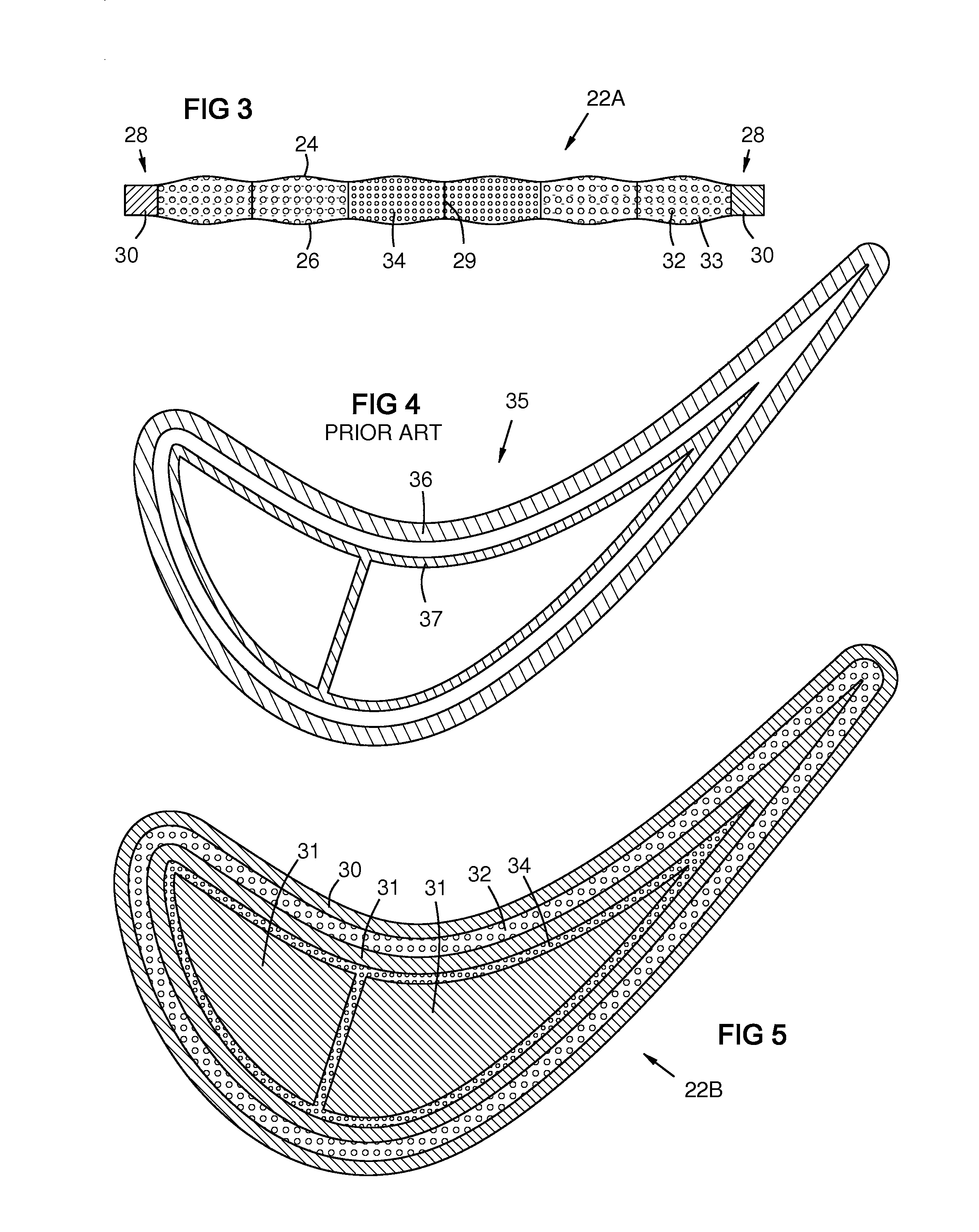Superalloy solid freeform fabrication and repair with preforms of metal and flux
a technology of flux and superalloys, applied in the direction of manufacturing tools, machines/engines, and so on, can solve the problems of inability to weld with traditional processes, limited hot box welding, and inability to meet the requirements of many repair applications
- Summary
- Abstract
- Description
- Claims
- Application Information
AI Technical Summary
Benefits of technology
Problems solved by technology
Method used
Image
Examples
Embodiment Construction
[0044]The present inventors developed a process and apparatus for solid freeform fabrication and repair having the following advantages:[0045]a) Can build on existing 3-D surfaces Not limited to horizontal flat surfaces[0046]b) High build rate, such as over 3 or 4 mm per layer[0047]c) Usable for metals that are difficult to weld[0048]d) Robust process that is adaptable to new damage modes.[0049]e) No pre-heating or fast cooling needed.[0050]f) No shielding of the melt pool by inert gas is needed[0051]g) Wide range of powder sizes.[0052]h) Reduced sensitivity to the powder production method.
[0053]An embodiment of the invention includes the steps described here. A preform of metal powder and flux powder is created that contains metal to be added to a component being additively fabricated or repaired The metal in the preform may be constrained in a distribution that defines a shape of a layer or slice of the component. The preform is preplaced on a working surface such as a work table,...
PUM
| Property | Measurement | Unit |
|---|---|---|
| open porosity | aaaaa | aaaaa |
| thick | aaaaa | aaaaa |
| temperature | aaaaa | aaaaa |
Abstract
Description
Claims
Application Information
 Login to View More
Login to View More - R&D
- Intellectual Property
- Life Sciences
- Materials
- Tech Scout
- Unparalleled Data Quality
- Higher Quality Content
- 60% Fewer Hallucinations
Browse by: Latest US Patents, China's latest patents, Technical Efficacy Thesaurus, Application Domain, Technology Topic, Popular Technical Reports.
© 2025 PatSnap. All rights reserved.Legal|Privacy policy|Modern Slavery Act Transparency Statement|Sitemap|About US| Contact US: help@patsnap.com



